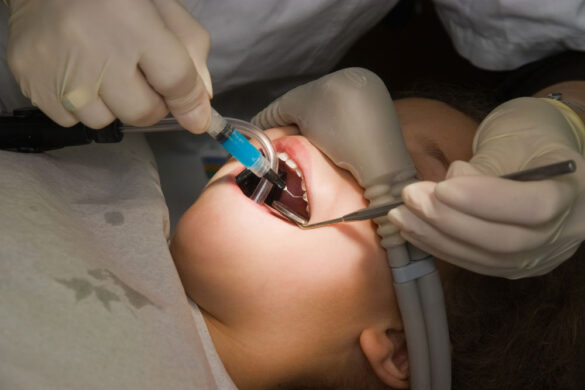Conscious Sedation

We take patient safety and comfort very seriously. We understand that some children require extra support to receive the dental care they need without fear or trauma. Our team has undergone extensive specialized training to provide the highest standard of care in pediatric sedation and anesthesia.
Our Commitment to Safety
Your child’s safety is our absolute priority. Our clinical team has completed rigorous anesthesia rotations as part of their pediatric specialty training and maintains up-to-date Pediatric Advanced Life Support (PALS) certifications. We continually update our training and monitor every child’s airway and breathing to ensure they are safe in our care.
Types of Sedation We Offer
Every child is unique. We offer several levels of sedation, each tailored to your child’s specific treatment needs, medical history, and comfort level.
1. Nitrous Oxide (Laughing Gas)
Commonly known as “laughing gas,” this is a gentle blend of nitrous oxide and oxygen.
-
How it works: Delivered via a comfortable nasal mask, it creates a “happy,” relaxed feeling.
-
The Benefits: It has a rapid onset and is quickly eliminated from the body after breathing pure oxygen for a few minutes.
-
Best for: Children with mild anxiety who need help staying calm during routine procedures. Note: Your child remains fully awake.
2. Oral Conscious Sedation
When nitrous oxide isn’t enough to help a child cooperate with complex treatments, we may recommend oral conscious sedation.
-
The Process: Your child drinks a liquid sedative (typically Midazolam, as recommended by the American Academy of Pediatric Dentistry).
-
Safety First: We perform a thorough airway evaluation before every sedation. If your child is sick or congested, we will reschedule the appointment to ensure their safety.
-
Best for: Young children or those with higher anxiety levels who require more significant relaxation.
3. General Anesthesia (Sleep Dentistry)
For children with extensive dental needs, specific medical conditions, or those who cannot cooperate due to age or maturity, we may recommend General Anesthesia.
-
The Experience: Your child will be completely asleep during the procedure.
-
Expert Supervision: All dental work is completed in a single visit under the constant supervision of a qualified anesthesiologist.
-
Best for: Complex surgeries, patients with special needs, or very young children with significant decay.
